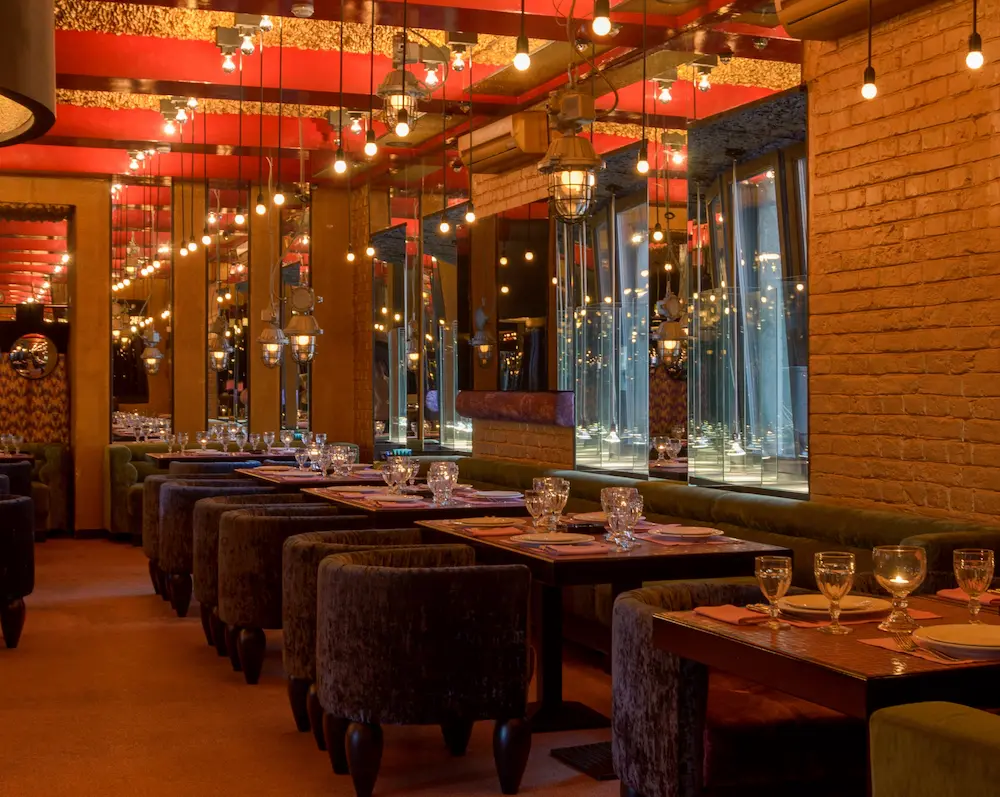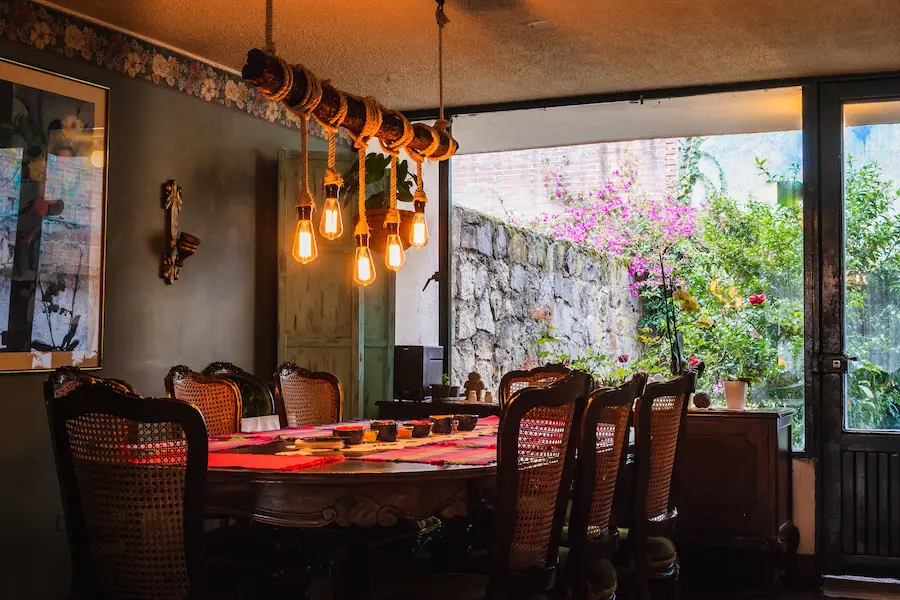Perhaps it was a cozy café that made you feel relaxed, or a vibrant restaurant that energized you. The magic behind these transformations lies in the careful orchestration of lighting, colour, and materials. Let’s delve into how these elements can be used to create specific atmospheres.
Setting the Stage: The Power of Lighting
Lighting is the unsung hero of interior design. It can transform a space from dull to dazzling. Consider the ambience you want to create:
- Intimacy: Soft, warm lighting with low intensity can create a cosy and intimate atmosphere. Think of dimly lit restaurants with candlelight or soft pendant lights.
- Energy: Bright, white lighting can invigorate a space and create a lively atmosphere. This is perfect for modern cafes or bustling restaurants.
- Focus: Directional lighting can draw attention to specific elements, such as artwork or display cases. This technique is often used in retail stores or museums.
But it’s not just about the brightness; it’s also about the type of light. Warm white light can create a welcoming ambience, while cool white light can feel more clinical. Experiment with different lighting fixtures and placements to achieve the desired effect.
The Psychology of Color
Colour is a powerful tool that can evoke emotions and influence behaviour. When choosing a colour palette, consider the atmosphere you want to create:
- Relaxation: Soft, muted colours like blues, greens, and purples can promote relaxation and tranquillity. Think of spa-like environments.
- Energy: Bold, vibrant colours like red, orange, and yellow can stimulate the senses and create a lively atmosphere. This is perfect for restaurants and bars.
- Sophistication: Neutral colours like black, white, and grey can create a sophisticated and elegant ambience. This is often used in high-end boutiques or luxury hotels.
Remember, colour psychology is subjective, so it’s important to consider your target audience when selecting a palette.

The Tactile Experience: The Role of Materials
The materials you choose can significantly impact the feel of a space. They contribute to both the visual and tactile experience:
- Luxury: Materials like marble, leather, and velvet can create a sense of opulence and luxury.
- Warmth: Wood, textiles, and natural fibres can create a cosy and inviting atmosphere.
- Modernity: Glass, metal, and acrylic can give a space a sleek and contemporary look.
Consider how different materials interact with light and colour. For example, a glossy surface will reflect light differently than a matte surface.
Bringing It All Together: Creating a Harmonious Atmosphere
To create a truly immersive experience, lighting, colour, and materials must work in harmony. Consider the following:
- Consistency: Ensure that your colour palette, lighting, and materials complement each other.
- Balance: Create a balance between different elements to avoid overwhelming the senses.
- Functionality: The space should not only look good but also function well.
By carefully considering these factors, you can create spaces that are not only visually appealing but also emotionally resonant.
The art of creating an atmosphere through lighting, colour, and materials is a complex but rewarding process. By understanding the psychology behind these elements, you can design spaces that evoke specific emotions and leave a lasting impression.
Whether you’re opening a new restaurant, designing a retail store, or creating a hospitality space, the right combination of lighting, colour, and materials can make all the difference.
If you’re looking for a Commercial kitchen designer to help you create a space that is both functional and aesthetically pleasing, Kilowa Design can assist you in bringing your vision to life.







